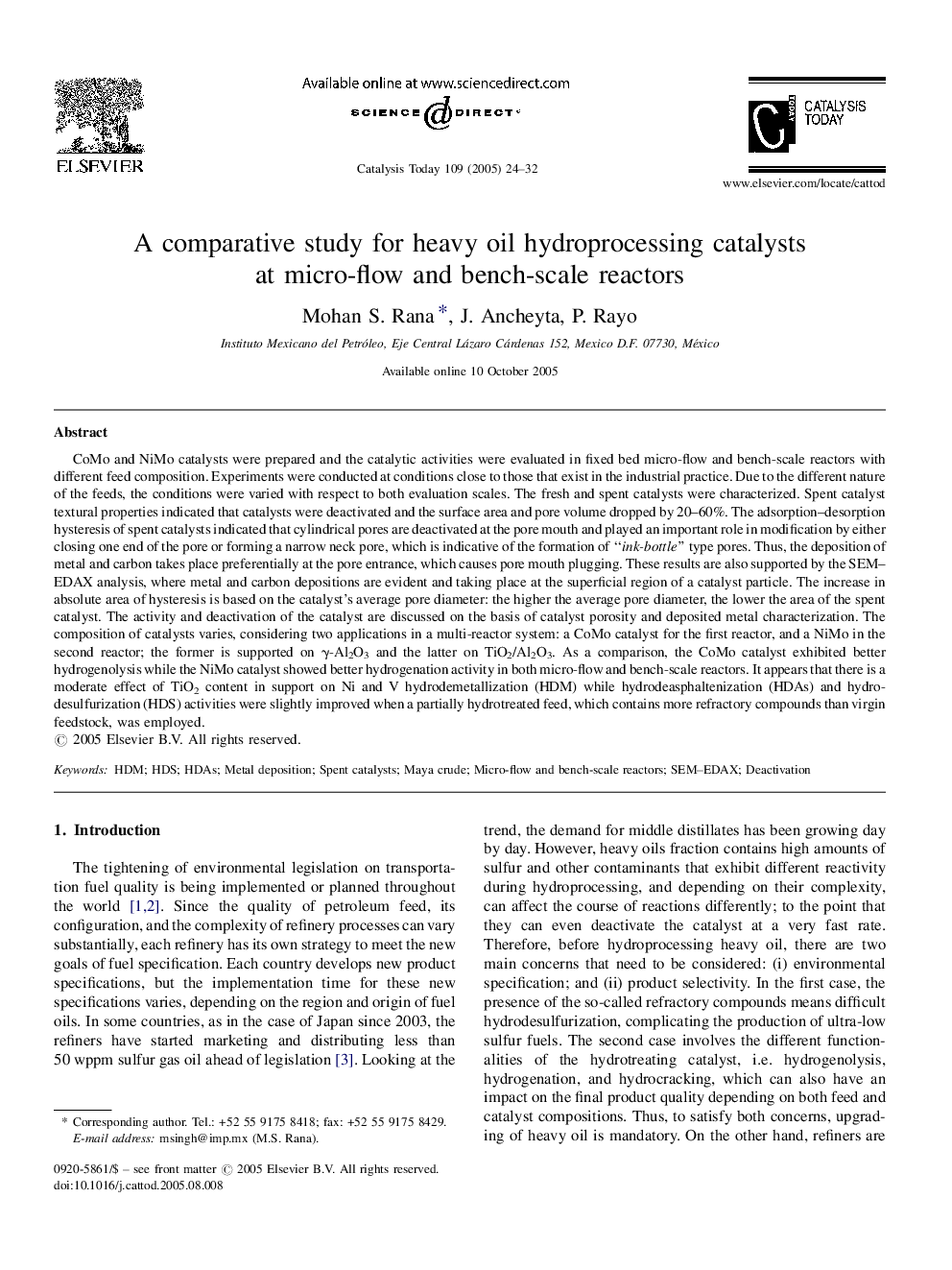| کد مقاله | کد نشریه | سال انتشار | مقاله انگلیسی | نسخه تمام متن |
|---|---|---|---|---|
| 9610134 | 47194 | 2005 | 9 صفحه PDF | دانلود رایگان |
عنوان انگلیسی مقاله ISI
A comparative study for heavy oil hydroprocessing catalysts at micro-flow and bench-scale reactors
دانلود مقاله + سفارش ترجمه
دانلود مقاله ISI انگلیسی
رایگان برای ایرانیان
کلمات کلیدی
موضوعات مرتبط
مهندسی و علوم پایه
مهندسی شیمی
کاتالیزور
پیش نمایش صفحه اول مقاله

چکیده انگلیسی
CoMo and NiMo catalysts were prepared and the catalytic activities were evaluated in fixed bed micro-flow and bench-scale reactors with different feed composition. Experiments were conducted at conditions close to those that exist in the industrial practice. Due to the different nature of the feeds, the conditions were varied with respect to both evaluation scales. The fresh and spent catalysts were characterized. Spent catalyst textural properties indicated that catalysts were deactivated and the surface area and pore volume dropped by 20-60%. The adsorption-desorption hysteresis of spent catalysts indicated that cylindrical pores are deactivated at the pore mouth and played an important role in modification by either closing one end of the pore or forming a narrow neck pore, which is indicative of the formation of “ink-bottle” type pores. Thus, the deposition of metal and carbon takes place preferentially at the pore entrance, which causes pore mouth plugging. These results are also supported by the SEM-EDAX analysis, where metal and carbon depositions are evident and taking place at the superficial region of a catalyst particle. The increase in absolute area of hysteresis is based on the catalyst's average pore diameter: the higher the average pore diameter, the lower the area of the spent catalyst. The activity and deactivation of the catalyst are discussed on the basis of catalyst porosity and deposited metal characterization. The composition of catalysts varies, considering two applications in a multi-reactor system: a CoMo catalyst for the first reactor, and a NiMo in the second reactor; the former is supported on γ-Al2O3 and the latter on TiO2/Al2O3. As a comparison, the CoMo catalyst exhibited better hydrogenolysis while the NiMo catalyst showed better hydrogenation activity in both micro-flow and bench-scale reactors. It appears that there is a moderate effect of TiO2 content in support on Ni and V hydrodemetallization (HDM) while hydrodeasphaltenization (HDAs) and hydrodesulfurization (HDS) activities were slightly improved when a partially hydrotreated feed, which contains more refractory compounds than virgin feedstock, was employed.
ناشر
Database: Elsevier - ScienceDirect (ساینس دایرکت)
Journal: Catalysis Today - Volume 109, Issues 1â4, 30 November 2005, Pages 24-32
Journal: Catalysis Today - Volume 109, Issues 1â4, 30 November 2005, Pages 24-32
نویسندگان
Mohan S. Rana, J. Ancheyta, P. Rayo,